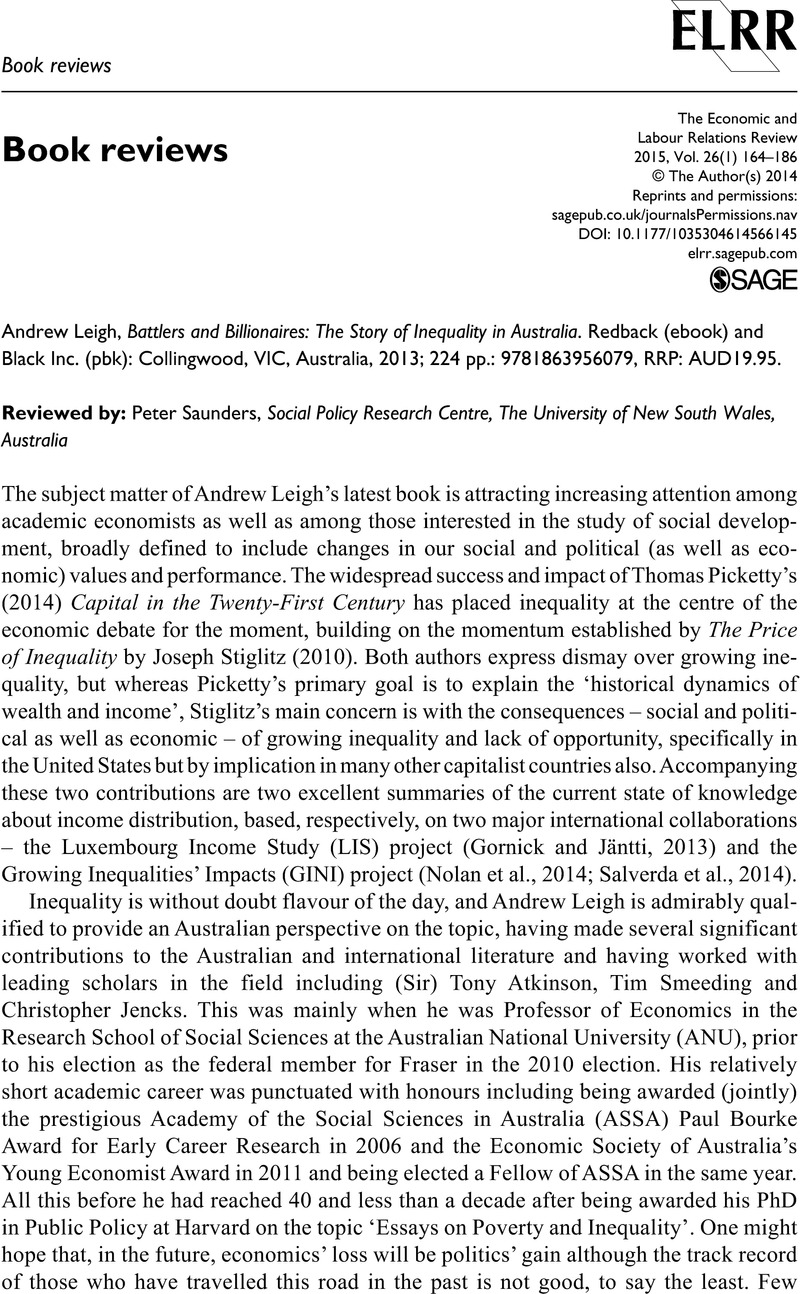No CrossRef data available.
Article contents
Andrew Leigh, Battlers and Billionaires: The Story of Inequality in Australia. Redback (ebook) and Black Inc. (pbk): Collingwood, VIC, Australia, 2013; 224 pp.: 9781863956079, RRP: AUD19.95.
Review products
Andrew Leigh, Battlers and Billionaires: The Story of Inequality in Australia. Redback (ebook) and Black Inc. (pbk): Collingwood, VIC, Australia, 2013; 224 pp.: 9781863956079, RRP: AUD19.95.
Published online by Cambridge University Press: 01 January 2023
Abstract
An abstract is not available for this content so a preview has been provided. Please use the Get access link above for information on how to access this content.

- Type
- Book reviews
- Information
- Copyright
- Copyright © The Author(s) 2014
References
Gornick, JC, Jäntti, M (eds) (2013) Income Inequality: Economic Disparities and the Middle Class in Affluent Countries. Stanford, CA: Stanford University Press.CrossRefGoogle Scholar
Nolan, B, Salverda, W, Checci, D, et al. (eds) (2014) Changing Inequalities and Societal Impacts in Rich Countries. Volume II. Thirty Countries’ Experiences. Oxford: Oxford University Press.CrossRefGoogle Scholar
Organisation for Economic Cooperation and Development (OECD) (2012) Divided We Stand: Why Inequality Keeps Rising. Paris: OECD.Google Scholar
Organisation for Economic Cooperation and Development (OECD) (2014) OECD Income Distribution database: GINI, poverty, income, methods and concepts. Available at: www.oecd.org/social/income-distribution-database.htm (accessed 30 October 2014).Google Scholar
Picketty, T (2014) Capitalism in the Twenty-First Century. Cambridge, MA: Harvard University Press.CrossRefGoogle Scholar
Salverda, W, Nolan, B, Checci, D, et al. (eds) (2014) Changing Inequalities in Rich Countries. Volume I. Analytical and Comparative Perspectives. Oxford: Oxford University Press.CrossRefGoogle Scholar
Saunders, P, Wong, M (2013) Examining Australian attitudes to inequality and redistribution. Journal of Australian Political Economy 71: 51–75.Google Scholar


